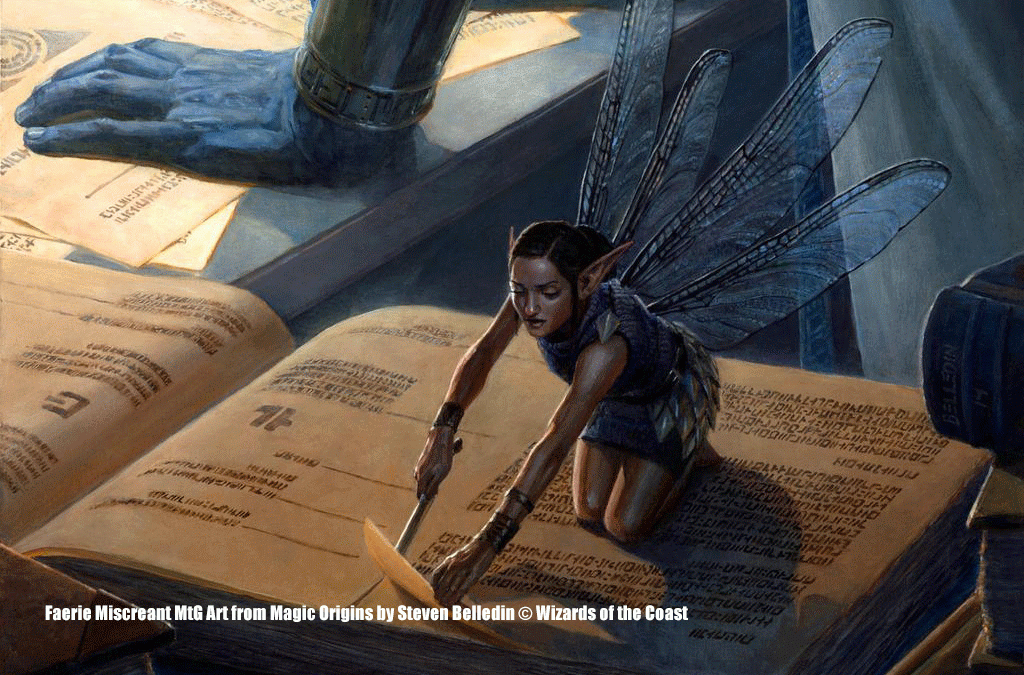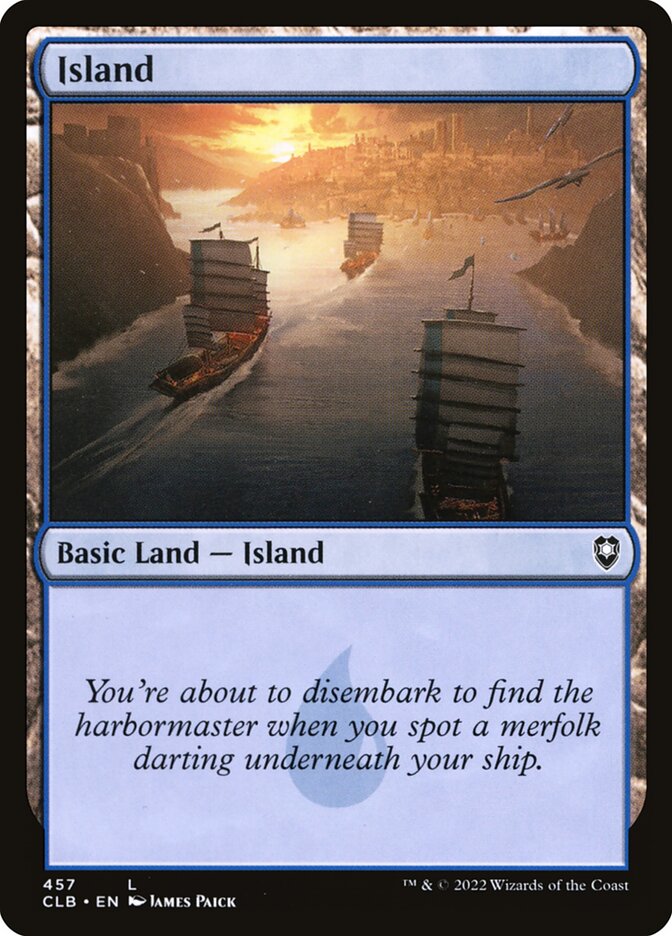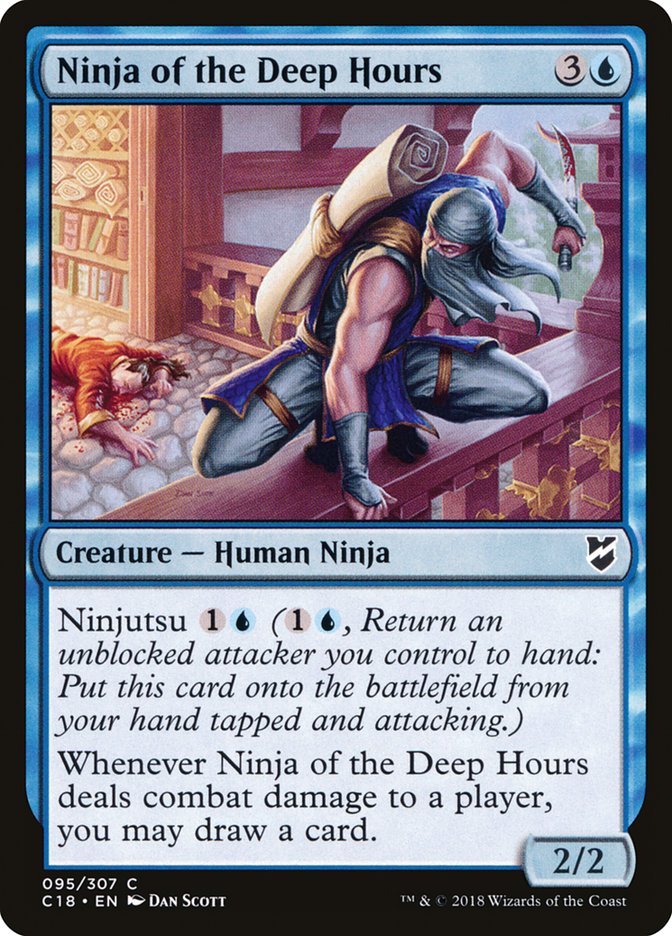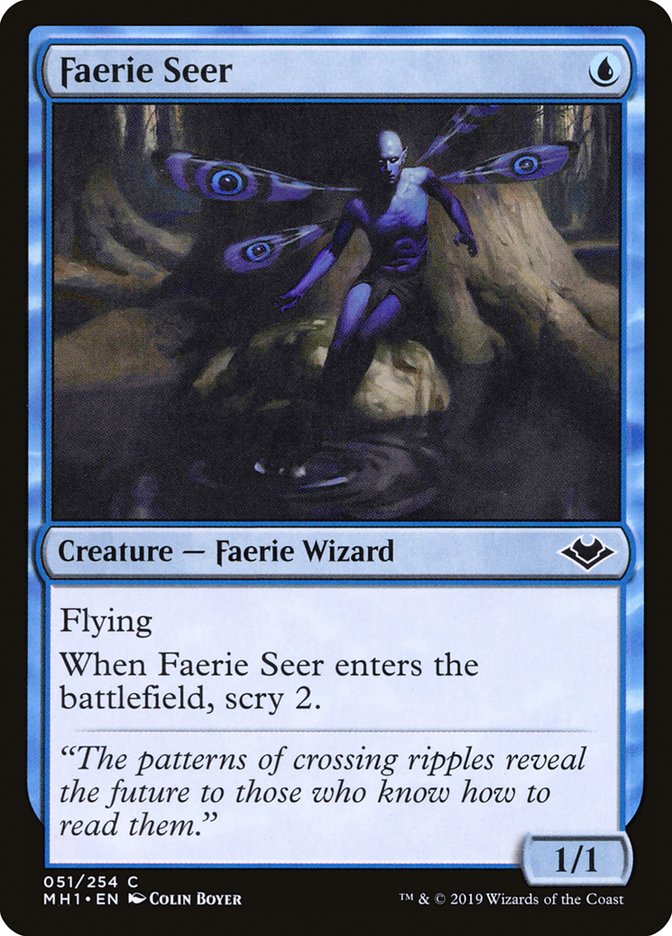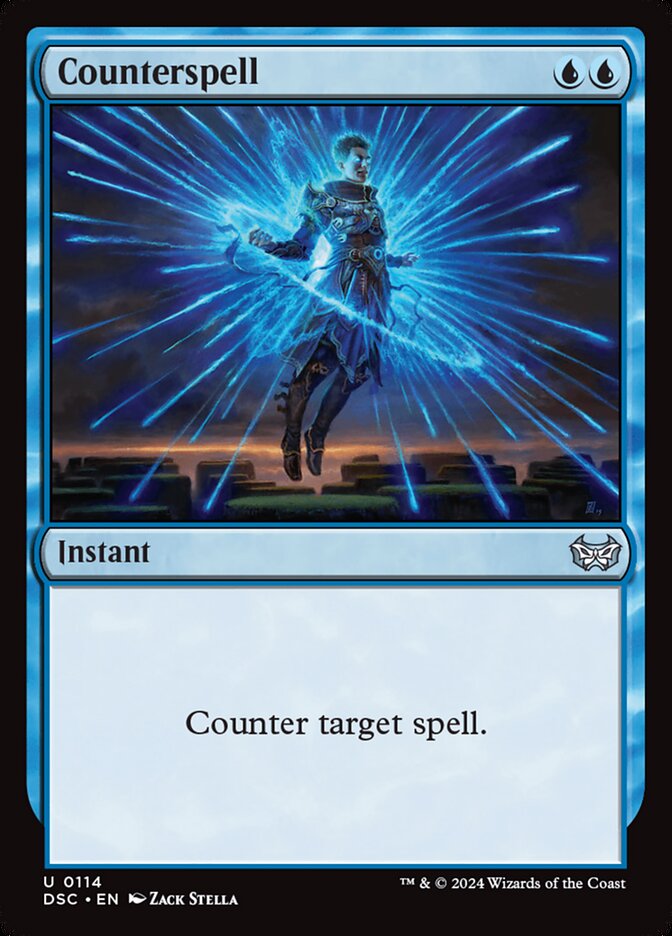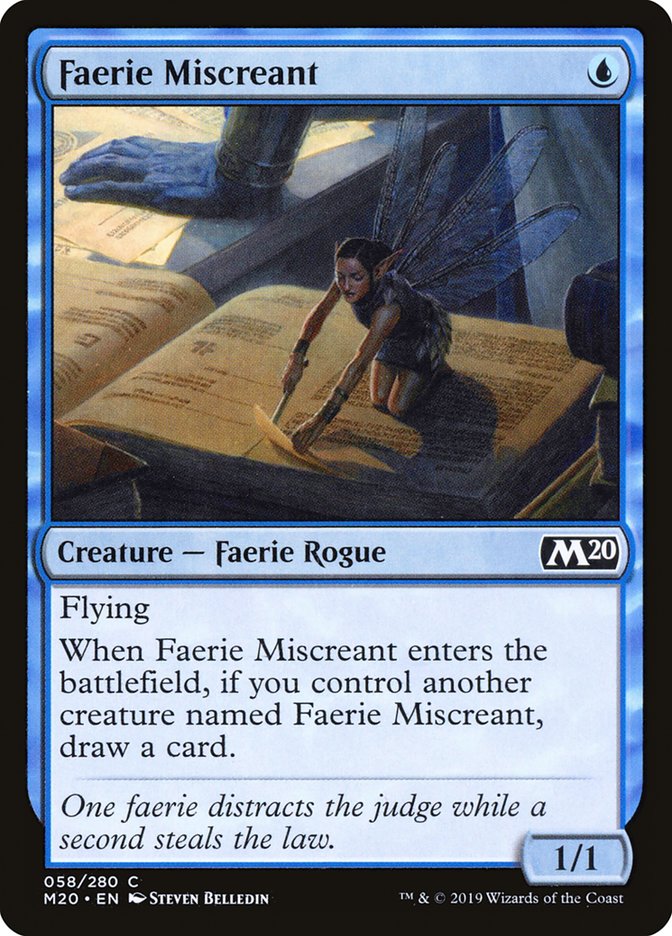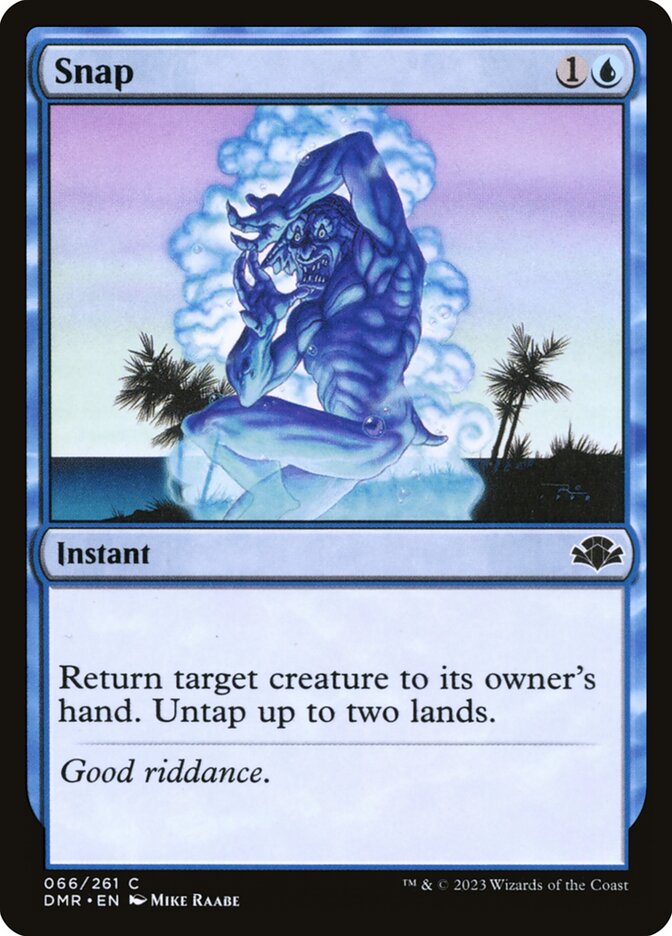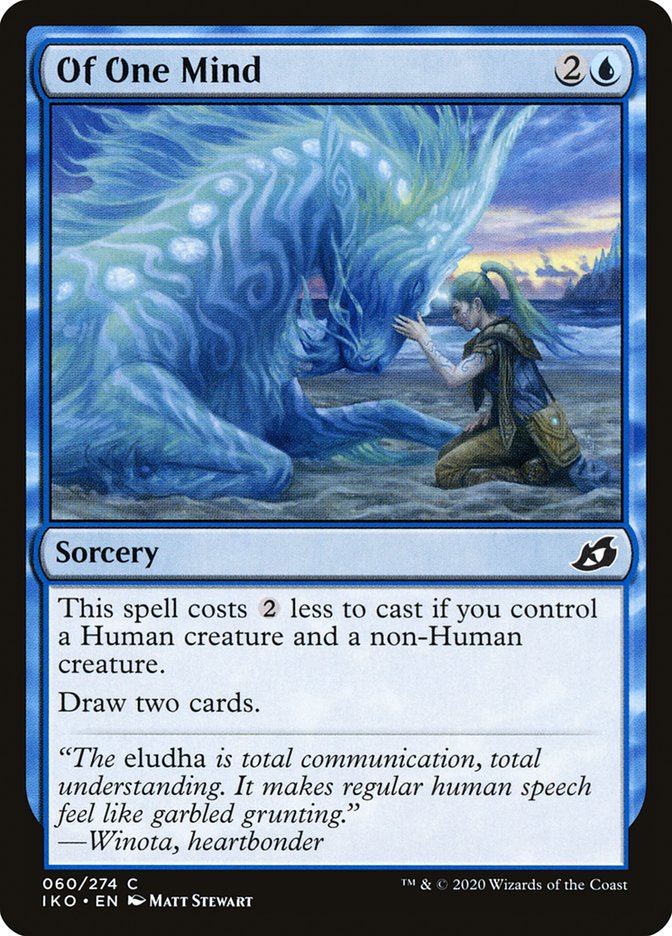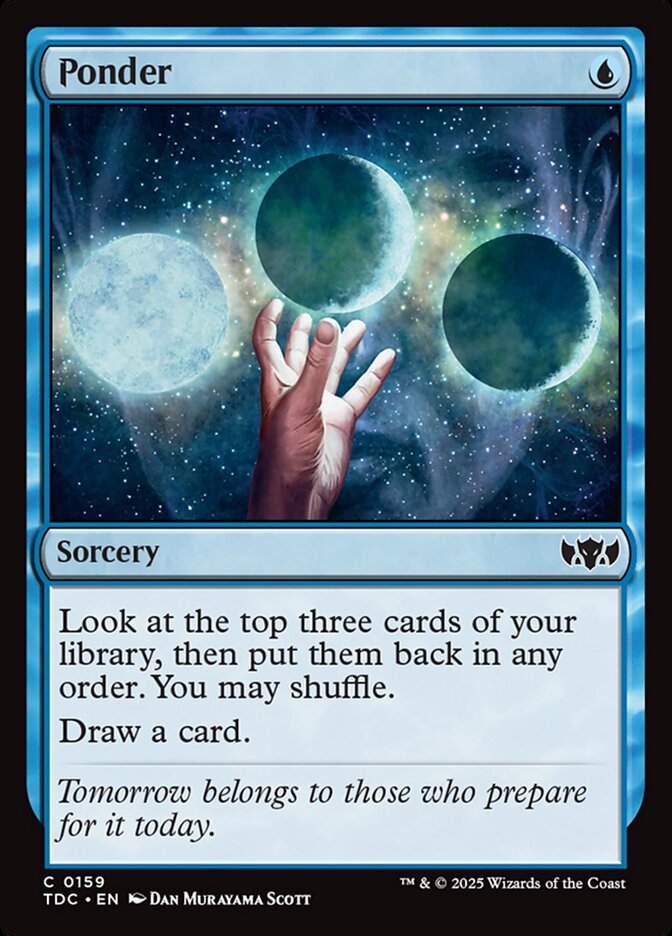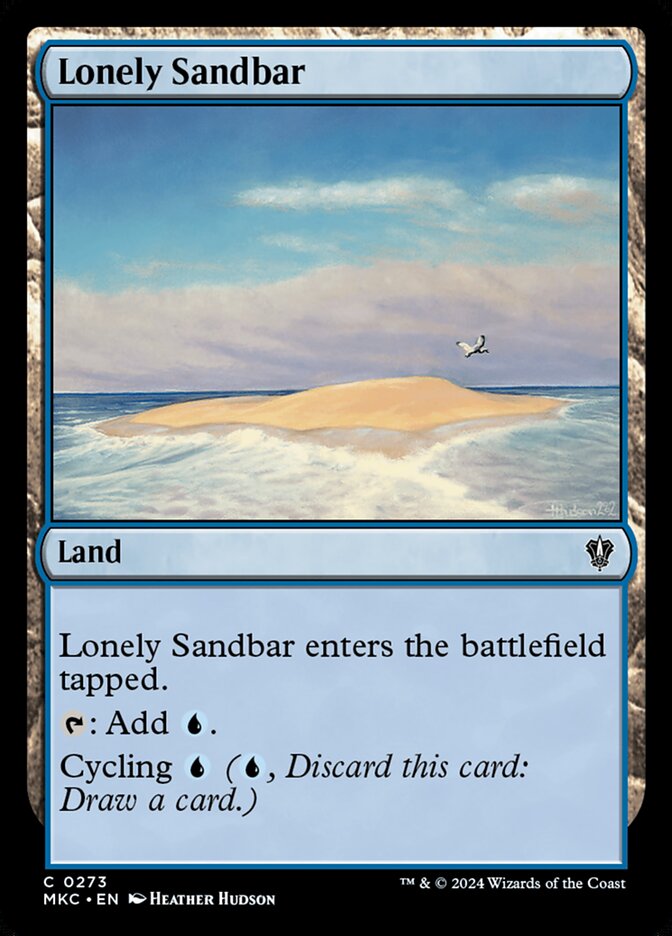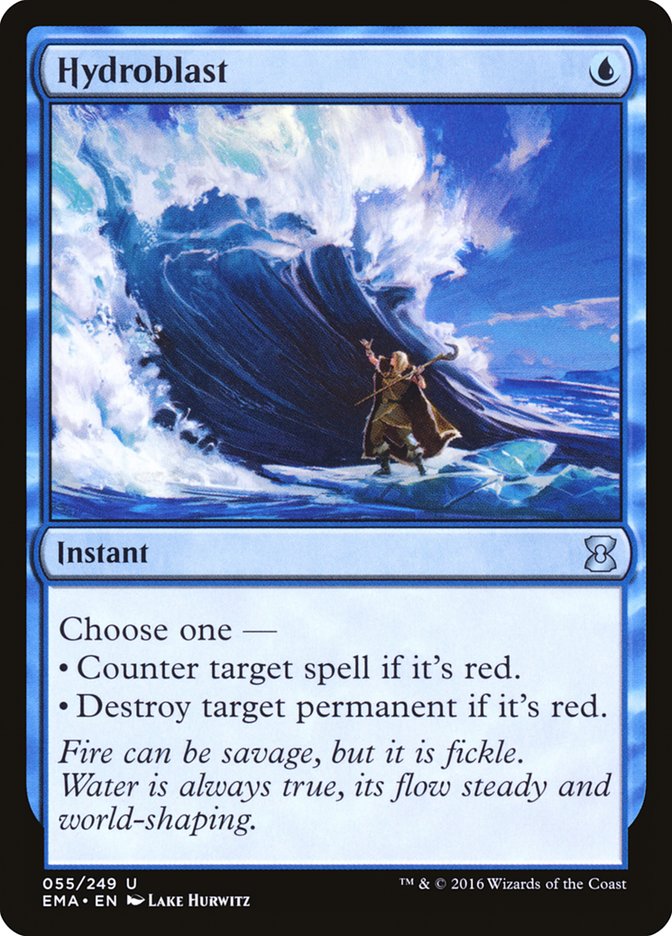Mono-Blue Faeries is one of Pauper’s most iconic and successful decks, blending tempo, card advantage, and disruption into a finely tuned strategy. This article will break down everything you need to know about Mono-Blue Faeries in the Pauper format – from the core gameplan and key card choices to mana base tips, sample opening hands, matchups, sideboard plans, and possible upgrades or variants. Whether you’re a seasoned Pauper grinder or a newer player looking to dive into a competitive yet affordable deck, this guide will provide insight in a style similar to MTGGoldfish: informative, slightly playful, and accessible to all. Let’s flutter right in!
Deck Overview and Core Strategy
Mono-Blue Faeries is a tempo deck at heart, using small evasive creatures and efficient spells to establish just enough pressure while continually disrupting the opponent’s game plan. In practical terms, this means you’ll be chipping away at your opponent’s life total with 1/1 flying Faeries each turn, all while holding up countermagic or bounce spells to answer whatever big plays they attempt. Over time, this “slow bleed” approach brings the opponent to zero life while never allowing them to stabilize – a classic play from ahead strategy where you always feel one step ahead of the opponent.
Key to the deck’s strategy is efficient use of mana every turn. Mono-Blue Faeries excels at casting cheap threats and cheap answers, often doubling up actions in a single turn. For example, you might spend one blue mana to deploy a Faerie Miscreant (a tiny flyer) and still have one or two mana open to cast a Counterspell on the opponent’s turn. The deck constantly asks: “How can I advance my board and keep mana open to disrupt the opponent?” Achieving that balance is the core skill for piloting this deck.
Deck List
4x Faerie Miscreant
4x Faerie Seer
4x Spellstutter Sprite
4x Moon-Circuit Hacker
4x Ninja of the Deep Hours
2x Snaremaster Sprite
1x Brinebarrow Intruder
Instants & Sorceries (18)
4x Counterspell
2x Spell Pierce
1x Dispel
4x Snap
2x Echoing Truth
4x Of One Mind
1x Saiba Cryptomancer
Lands (19)
17x Island
1x Lonely Sandbar
1x Remote Isle (or another utility/cycling Island)
Sideboard (15)
2x Hydroblast
2x Blue Elemental Blast
2x Annul
2x Echoing Truth
2x Bind the Monster
1x Sunken City
1x Dispel
1x Weakstone’s Subjugation
1x Cogwork Wrestler
1x Unable to Scream
Importantly, Mono-Blue Faeries leverages synergy between its creatures and spells to out-grind opponents on card advantage. Many of your creatures replace themselves with extra draws or set up future draws, ensuring you don’t run out of gas. Meanwhile, your interaction spells are mana-efficient, often trading favorably against more expensive opponent cards. This combination of pressure, disruption, and card advantage has made Mono-Blue Faeries a top-tier contender in Pauper’s meta (currently around ~6–7% of the competitive metagame by popularity)
To put it in perspective: Pauper in 2025 has several strong archetypes (Affinity, Burn, Red-based Aggro, Blue Terror, etc.), and Mono-Blue Faeries is firmly among them. Its ability to “play the policeman” – countering key threats and setting the tempo – means many decks must adapt to it. In fact, sideboard cards like Pyroblast (which can cheaply kill blue spells or creatures) are extremely common, appearing in well over half of Pauper decks, largely to combat blue strategies like Faeries. Despite this hate, Mono-Blue Faeries continues to post strong results in leagues and challenges, proving its resilience and power.
In summary, the core strategy of Mono-Blue Faeries is:
-
Establish Early Board Presence: Use cheap flying creatures (Faeries) to start nibbling at the opponent’s life total from turn 1 or 2.
-
Maintain Tempo Advantage: Use counterspells and bounce effects to prevent the opponent from resolving their most important cards, or to answer them efficiently if they do.
-
Generate Card Advantage: Leverage creatures like ninjas and draw spells to keep a full hand, so you can trade 1-for-1 with the opponent’s cards and still come out ahead in resources.
-
Close Out the Game Slowly but Surely: There’s usually no single huge spell that wins the game; instead, a combination of 2/2 Ninjas drawing extra cards and a squadron of Faeries dealing incremental damage will eventually seal the deal.
If you enjoy reactive play, tricky combat decisions, and outsmarting opponents with well-timed responses, Mono-Blue Faeries delivers a highly rewarding experience. Next, let’s dive into the specific cards that make this strategy possible.
Key Card Choices and Card-by-Card Analysis
Mono-Blue Faeries is built around a tight core of creatures and spells that work in harmony. We’ll break down the key card choices by category, including why each is important and how it contributes to the deck’s gameplan. Understanding the role of each card will help you make better decisions in gameplay and tuning the list.
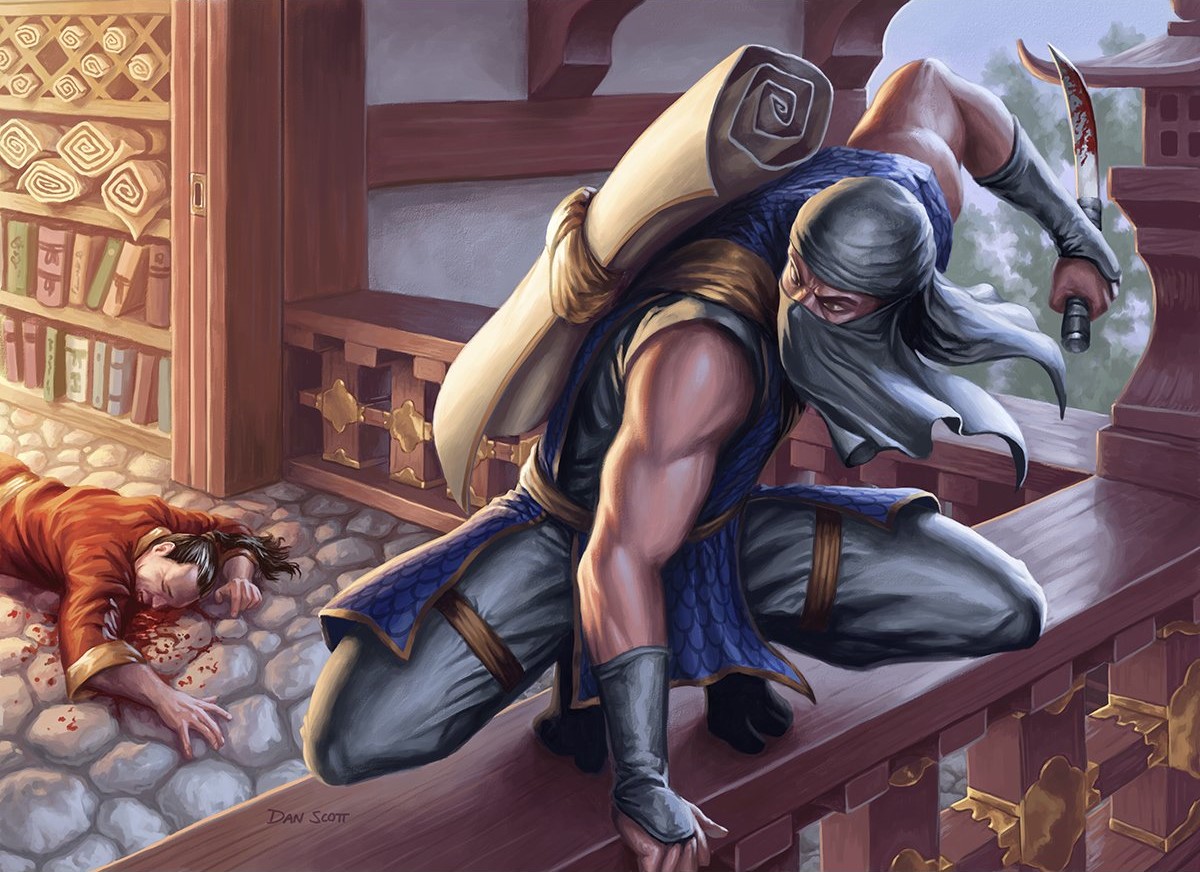
Ninja of the Deep Hours by Dan Scott © Wizards of the Coast
Creatures: The Faerie Fleet and Friends
Faerie Seer (4 copies) – Another 1/1 flyer for {U}, this Faerie draws you quality instead of quantity. When Faerie Seer enters, you Scry 2, letting you set up your next draws. This is excellent on turn 1 to smooth out your hand – for example, you can scry away excess lands or dig for a Counterspell if you need one. Like Miscreant, the Seer is also a cheap flyer to poke in for damage or enable Ninjutsu. Together, Miscreant and Seer form the core turn-one plays of the deck, each providing value (card draw or scry) on top of a flying body.
Spellstutter Sprite (4 copies) – The namesake Faerie of the deck. Spellstutter Sprite is a 2-mana Faerie Wizard (1/1 flash) that counters target spell with mana value X or less, where X is the number of Faeries you control. In plain terms, even by itself Spellstutter can counter opposing one-mana spells (since it sees itself upon entering). With another Faerie in play, it counters two-mana spells, and so on. This card is absolutely stellar – it’s both a creature and a counterspell in one. Spellstutter is the reason we run so many cheap Faeries; it turns a board of tiny flyers into a formidable protective shield of countermagic. It often feels like a game of “Faerie taxes” for the opponent, where any small spell they cast might just get Sprite’d. This one card pulls double duty, advancing our board while answering the opponent, exemplifying the tempo playstyle. It’s no exaggeration to call Spellstutter Sprite “the real star” of the deck
Moon-Circuit Hacker (4 copies) – One of our Ninja creatures. Moon-Circuit Hacker is a 2/1 Human Ninja that can Ninjutsu for {U} (meaning if you have an unblocked attacking creature, you can pay {U} to swap that creature with the Ninja from your hand, returning the original creature to hand). When Moon-Circuit Hacker deals combat damage to a player, you draw a card, then discard a card unless it entered play that turn. In practice, the first time you Ninja it in, it will draw a card (with no discard), providing immediate payoff. This card is basically a cheaper, slightly weaker version of the deck’s other ninja (Ninja of the Deep Hours). Its strength is the super-low ninjutsu cost {U}, which means on turn 2 you can often activate this by sneaking it in for a Miscreant or Seer that went unblocked on turn 1. Not only do you draw a card, but you also pick up the Miscreant/Seer back to your hand to potentially replay and get their enter-the-battlefield value again later! This synergy between Ninjas and our Faeries is a huge part of the deck’s engine. A common sequence is: Turn 1 Faerie, turn 2 attack with Faerie, ninjutsu in a Hacker, draw a card. This puts pressure while netting you cards. The Hacker’s 2 power is also a nice upgrade on the 1/1 Faerie it replaced, speeding up the clock slightly.
Ninja of the Deep Hours (4 copies) – The classic Pauper Ninja. Ninja of the Deep Hours (often just called “Ninja” in Pauper lingo) is a 2/2 Human Ninja with ninjutsu {1}{U}. Whenever it deals combat damage to a player, you draw a card. Simple and effective. Ninja of the Deep Hours has been a staple of blue tempo decks for years, and in Mono-Blue Faeries it shines. Like the Hacker, you can swap it in for an unblocked Faerie to start drawing extra cards. It costs a bit more mana to ninjutsu in than Moon-Circuit Hacker, but it also doesn’t require discarding and continues drawing a card on every hit. The ideal scenario is to keep Ninjas connecting turn after turn, drawing you an extra card each time – you’ll bury the opponent in card advantage if they can’t stop it. Ninjas also have a neat interaction with Spellstutter Sprite: you can flash in a Sprite to counter something, then next turn ninjutsu in a Ninja to pick the Sprite back up, ready to reuse it for another counterspell later. This looping of Spellstutter via Ninja is one of the deck’s most powerful and annoying plays – it feels like you always have a counterspell available as long as you have a Ninja and Sprite bouncing off each other. As a human, Ninja of the Deep Hours also helps enable the draw spell Of One Mind (which we’ll cover soon) by providing the “Human” part of the Human+non-Human requirement.
Brinebarrow Intruder (2 copies) – This is a 1/2 Human Rogue with flash (from Eldraine), that gives an opponent’s creature -2/-0 until end of turn on entering. Essentially, it’s a cheap combat trick on a stick. Brinebarrow Intruder (and similar cards like Cogwork Wrestler or Humbling Elder, which some lists include in varying numbers) serve as extra ways to muck up combat and buy time against aggro. Flash it in to shrink a big attacker – maybe turning a lethal swing into a survivable one – or to make your blocks favorable. Being a Human, it also again helps turn on Of One Mind. These slots (the Intruders or other 1-drop flash creatures) are considered flex slots; not every Mono-U Faeries list runs them, but in the current meta with lots of aggressive creatures (e.g. Goblins, large green monsters, etc.) they can be useful speed bumps. Notably, Cogwork Wrestler (from Lost Caverns of Ixalan) is an artifact creature with the same effect as Brinebarrow Intruder (-2/-0 flash), which some players prefer because it being an artifact can dodge certain removal or because it combos with Ninjas similarly. Either way, these cards fill a similar role – cheap flash blockers with minor debuff effects.
Snaremaster Sprite (2 copies) – Another relatively new Faerie from Wilds of Eldraine. Snaremaster Sprite is a 1/1 flyer for {U} (like our other Faeries) but with an ability: when it enters the battlefield, you may pay {2}. If you do, tap target creature an opponent controls and put a stun counter on it (stun counter means it stays tapped for an extra turn). This is a beautifully synergistic piece for a tempo deck: on curve it’s a simple 1/1 flyer, but later in the game, or if you have spare mana, it becomes a pseudo-removal spell by tapping down a blocker or attacker for effectively two turns. Because it’s a Faerie, it also counts towards Spellstutter Sprite’s counter power. Some lists run 0, some run a couple of these – here we have 2 copies. It’s the kind of card that isn’t core to the deck’s engine, but adds value and interaction in certain scenarios (for example, tapping down a large creature like a Gurmag Angler or Tolarian Terror for a turn can let you sneak in lethal damage or buy time to find a permanent answer). Plus, at worst, it’s a 1-drop Faerie to advance your early game plan.
Saiba Cryptomancer (1 copy) – It’s a 0/1 Moonfolk Ninja with flash and “Backup 1” (meaning when it enters, you put a +1/+1 counter on a creature, and that creature gains hexproof until end of turn). Essentially, it’s a protective spell in creature form – you can flash in Cryptomancer to give one of your key creatures hexproof (and a +1/+1 boost). This can save a Ninja from a removal spell or protect any creature from a burn spell. Afterward, you still have the 0/1 creature (which got the counter if you targeted itself, making it 1/2). It’s a very low-cost inclusion that can sometimes swing a game by countering an opponent’s removal (without using an actual Counterspell). Since it’s also a Ninja, it synergizes with our theme (and also is a Human, interestingly enough). While not universally included, it highlights how flexible the creature base can be in supporting the main strategy. In our list it’s a 1-of “gotcha” card that can be tutored with Spellstutter (via the pseudo-tutor of drawing so many cards) and surprise the opponent.
Those are the primary creatures you’ll see in Mono-Blue Faeries. In total, typically ~20 creatures (the exact number can vary from 18 to 22). The mix above aims to maximize the deck’s strengths: plenty of flying Faeries to enable Spellstutter Sprite’s countermagic and Ninja ninjutsu attacks, and a suite of Ninjas to capitalize on those cheap flyers by drawing cards. The few flex slots (Intruder, Snaremaster, Cryptomancer) give the deck some game-one answers to specific threats and help against fast attackers, without diluting the core plan.
One important thing to remember is that many of these creatures are very small. You’re not going to overpower anyone with brute force – instead, it’s the accumulation of value and incremental damage that wins. A 1/1 might seem trivial, but when it’s drawn you extra cards and pecked for a quarter of the opponent’s life total over a few turns, it’s punching above its weight. And when those 1/1s suddenly counter the opponent’s spells thanks to Spellstutter Sprite, they prove their worth even more.

Counterspell by Mark Poole © Wizards of the Coast
Spells: Card Draw and Interaction
Mono-Blue Faeries backs up its creature squad with a suite of spells that ensure you stay ahead on resources and answer anything threatening that the opponent tries to do. These spells can be broadly grouped into card draw/advantage and interaction (counterspells and bounce/removal).
Card Advantage and Draw Spells:
Of One Mind (4 copies) – This sorcery from Ikoria is a premier draw spell in this deck. It normally costs {2}{U}, but if you control a Human creature and a non-Human creature, it costs 2 less – meaning you can cast it for just {U}. In Mono-Blue Faeries, that condition is surprisingly easy to meet: your Ninjas (and some others like Humbling Elder/Intruder) are Human, while your Faeries are non-Human. By the time you have even a Ninja of the Deep Hours in play alongside a Faerie, Of One Mind becomes a one-mana “Draw 2 cards” – an incredibly efficient rate. Very often on turn 3 or 4 you’ll be firing this off for one mana and happily going up cards. Even cast for full cost, it’s not bad, but the deck is built to take advantage of the discount. Of One Mind helps ensure that even if you trade off resources or if the game goes long, you can refill your hand and keep the pressure and answers coming.
Preordain (usually 0-4 copies, optional) – Many Pauper blue decks run Preordain (the powerful one-mana scry 2, draw 1 cantrip) for consistency. Mono-Blue Faeries sometimes includes a couple, but many lists these days actually don’t run Preordain – they rely on Faerie Seer’s scry and the sheer volume of other draw to handle consistency. Our list in this guide doesn’t run any dedicated cantrips like Preordain/Ponder, focusing instead on creature-based filtering (Seer) and draw (Of One Mind, Ninjas). However, it’s worth noting as an option – if you find the deck is too inconsistent or you need to dig for specific answers more, you could consider adding 2–4 Preordain and adjusting creature counts slightly. Preordain is never “bad,” it’s just a matter of deck space.
The takeaway is that your creatures are your draw engines (Ninjas) and Of One Mind supplements that. This creature-based draw is nice because it advances your board while gaining cards, keeping synergy with the tempo game.
Counterspells and Interaction:
Counterspell (4 copies) – The classic. {U}{U} to counter any spell, no questions asked. This is your hard answer to whatever you don’t have a specific answer for. Counterspell is important to stop things that slip past Spellstutter Sprite’s range (bigger spells) or to answer problematic permanents that your bounce can’t permanently deal with. It’s also crucial in protecting your own board at times – for example, countering an opponent’s removal spell if that removal would ruin your plan (though often you’d prefer a cheaper answer like Dispel in those cases). In short, Counterspell is a staple and you’ll almost never side all of them out because having unconditional answers is critical. The double blue mana cost is not an issue in a mono-color deck with lots of Islands.
Snap (4 copies) – Arguably one of the most powerful tempo cards in Pauper, Snap is a cornerstone of Mono-Blue Faeries. Snap is an instant that bounces a creature back to its owner’s hand and untaps up to two lands. It effectively costs zero mana (it costs {1}{U}, but untapping two Islands pays you back {U}{U}), and sometimes even nets you mana if you had any non-Island blue sources. Why is Snap so good here? Because it lets you answer a creature (temporarily) without slowing down your development. For example, if an opponent taps out for a scary creature, you can Snap it back to their hand and then still have mana to cast a Spellstutter Sprite or Counterspell on a follow-up, all in the same turn! It’s the ultimate “gotcha!” play. Snap works beautifully with cards like Spellstutter (you can bounce a blocker out of the way before attacking, or bounce something end step to force them to recast into your counterspell on your turn). It’s also a way to reuse your own Spellstutter in a pinch – bounce your Sprite to replay it later. Just remember, Snap only hits creatures, so it doesn’t help against noncreature permanents. But for creatures, especially expensive ones, it’s a huge tempo swing. Bouncing, say, a 5-mana creature with your 2-mana spell essentially time-walks the opponent’s last turn and sets them back, while you lost basically no mana in the exchange.
Echoing Truth (1–2 copies) – An instant bounce spell for {1}{U} that returns all permanents with a given name to hand. Echoing Truth is a versatile answer: it can bounce tokens (all those 1/1 Goblin tokens from a Kuldotha Rebirth, for example, get wiped out in one go) and deal with troublesome permanents that slip through counters, at least temporarily. It’s particularly useful against decks that flood the board with multiple copies of the same thing – e.g. Battle Screech bird tokens, Elves swarms (multiple Quirion Rangers, etc.), or Bogles where you bounce the creature with all auras attached. It’s not permanent removal, but it buys you time and sometimes that’s all you need to swing the race. Most Faeries lists include a couple either main or in the side. We have 2 in the 75 (some split main/sideboard likely). Keep in mind, it hits any nonland permanent with the same name, not just creatures, so it can even bounce multiple copies of a problematic enchantment/artifact if that occurs.
Removal Auras (Sideboard, sometimes 1 main) – Blue doesn’t typically get true “destroy” removal, but recent sets have given us a few Aura-based removal options at common that some Mono-U lists use. Notable ones:
-
Bind the Monster – Enchant creature for {U}. It taps the creature and deals damage to you equal to its power, and that creature stays tapped (it doesn’t untap). Essentially a one-mana way to permanently lock down a creature, at the cost of some life. This is great vs big creatures (Tolarian Terror, Gurmag Angler, etc.) as a cheap answer, though taking a hit to life can hurt against aggro.
-
Weakstone’s Subjugation – Enchant artifact or creature for {U}. When it enters, you may pay {3} to tap the creature; either way, the enchanted permanent doesn’t untap. Similar to Bind but without life loss; instead, you pay extra if you need to tap it immediately. Often you can arrange to cast this right after a creature attacked (so it’s already tapped) and you don’t need to pay the {3}. Very efficient.
-
Ringing Strike Mastery – An Aura for {U} (from Tarkir: Dragonstorm) that taps a creature on enter and prevents it from untapping, and importantly, removes flying (stops the creature from “striking the air,” flavorfully). Actually, we should clarify: Ringing Strike Mastery taps the creature and then keeps it tapped every turn (a Claustrophobia effect). It’s another cheap permanent answer to a creature.
-
Unable to Scream – A very new addition (from a special set, Duskmourn) that for {U} enchants a creature, removes all its abilities and turns it into a 0/2 “Toy” creature. This is effectively blue’s Pacifism – the creature stays on board but is useless (0 power, no abilities). Mono-Blue Faeries sometimes brings this in from the sideboard to deal with monsters that you otherwise struggle to answer (for instance, an opposing Gurmag Angler or Ulamog’s Crusher in some ramp matchup). It being only 1 mana is huge for the tempo game.
These Auras are typically sideboard tools; we’ll discuss them more in the sideboard section, but it’s worth noting that the presence of these cards in Pauper has shored up one of Mono-Blue’s historical weaknesses (big creatures that you failed to counter). Now you can actually remove a creature in blue, albeit in a roundabout way. Some players even include 1 copy main deck depending on expected meta (for example, if Tolarian Terror decks are everywhere, sneaking a Bind the Monster main could save Game 1).
-
Miscellaneous Interaction: In addition to the above, you’ll often see one-of specialty answers:
-
Dispel (as mentioned, counters an instant for {U}) – we have one in main.
-
Blue Elemental Blast / Hydroblast (sideboard cards to deal with red threats – more later).
-
Annul (sideboard, counters an artifact or enchantment for {U}, key vs Affinity and Bogles) – usually sideboard.
-
Lose Focus or Prohibit – occasionally used counterspells that have flexibility. Lose Focus (Strixhaven) is a replicate counter for 2 mana; Prohibit counters small spells with kicker for bigger ones. Our build sticks to the simpler Counterspell/Pierce/Dispel suite.
-
Suffocating Fumes – a card to watch out from opponents! It’s not in our deck (since it’s black via cycling), but many opponents pack this against us. It’s a cycle card that gives all opponent’s creatures -1/-1. Mentioning it here as a reminder that all our creatures are X/1 or X/2, so a resolved Fumes can wipe our board. Part of our interaction plan in mirror/versus these cards is to counter them or play around them (or side in something like Sunken City – an enchantment that buffs our faeries’ toughness, which we’ll mention later).
-
In summary, the spell package of Mono-Blue Faeries is tuned for efficiency. You have cheap draw to keep the cards flowing, and cheap interactive spells (lots of one and two-cost answers) to ensure you can always cast something relevant each turn. A key skill is knowing what to counter or bounce – not every spell the opponent plays is worth a Counterspell. Often you’ll let less important things resolve and save your answers for the truly critical threats that would stop your Faeries or overwhelm your defenses. The deck thrives when you can stay one step ahead, and these cards are the tools that make that possible.
Mana Base and Budget Considerations

Island by Titus Lunter © Wizards of the Coast
One of the great advantages of playing Mono-Blue in Pauper is the simple and consistent mana base. No fancy dual lands or expensive fetches needed – just good old Basic Islands get the job done! A typical mana base for Mono-Blue Faeries looks like this:
-
17–18 Island: The bread and butter. You need a lot of blue sources to reliably cast {U}{U} spells like Counterspell on turn 2, and to potentially double-spell in a turn. Most lists run 17 or 18 basic Islands. Our list runs 17 Islands and a couple of utility lands (see below). Flooding on Islands can happen, but remember you have Faerie Seer to scry away extras and Ninjas/Of One Mind to draw into action, so having ample Islands is usually fine.
-
Lonely Sandbar (1–2 copies): This is a blue cycling land – it enters tapped if played normally, but you can cycle it (discard it to draw a card) for {U}. Including one or two cycling lands is a common practice to hedge against mana flood. In long games, if you draw a Lonely Sandbar, you can cash it in for a new card instead of playing yet another land you might not need. The downside is if you have to play it as a land, it’s tapped for the turn, which can slow you down a hair. We typically see one copy, as a compromise between consistency and flood insurance. In our list we have 1 Lonely Sandbar.
-
Remote Isle or other utility lands: Some players opt for a Remote Isle (another cycling Island) in addition or instead of Sandbar. A few lists might run a single copy of a land like Soaring Seacliff (ETB gives a creature flying – redundant here since most already fly) or Quicksand (land that can sacrifice to give an attacking creature -2/-2). However, Mono-U Faeries usually can’t afford colorless lands (Quicksand is colorless) because of the heavy blue requirements. So you won’t see much of that. Mystic Sanctuary used to be a powerhouse land (letting you put a spell from graveyard on top when it enters), but it was banned in Pauper for power reasons – so that’s not part of the mana base anymore.
Essentially, 18 lands total is the norm (some run 19 if they expect very grindy games, some as low as 17 if they have extra cantrips). It’s a low land count compared to some decks, reflecting that our curve is very low (the highest mana value in the deck is 2 or 3, aside from hardcasting Ninja of Deep Hours at 4, which we rarely do).
Budget Considerations: The wonderful news is that Mono-Blue Faeries is an extremely budget-friendly deck! Pauper is a format of commons, so the deck’s pieces are all commons and generally cheap to acquire. As of writing, the entire deck can be built in paper for on the order of $40–$60 USD, and even cheaper on Magic Online (~60 tix, which is roughly $60 but those tix can be resold/traded) – though online the popularity can drive some staples like Ninja of the Deep Hours up a bit in price. Let’s highlight if any cards are notably pricey for a budget:
-
Ninja of the Deep Hours: Despite multiple printings (originally a common from 2005, also reprinted in Modern Masters, Time Spiral Remastered, etc.), Ninjas can be a few dollars each due to being Pauper and Commander staples. Still, we’re talking maybe $2–3 each at most. In total, a playset might be $10 or so. If budget is super tight, you could start with 2 Ninjas and 2 more Moon-Circuit Hackers (which are very cheap) and gradually get the full set, but performance will dip a bit without the full four.
-
Spellstutter Sprite: Surprisingly, even though this card is the Pauper all-star, it’s still very cheap (it’s been reprinted in various supplemental products). You can usually get these for under $1 each easily. So cost is not a barrier here.
-
Hydroblast / Blue Elemental Blast (sideboard): These sideboard cards (which we’ll cover soon) are old and only printed back in the day, so they might run a couple bucks each. If you’re on a budget and facing a lot of red decks, you will want at least Hydroblasts. The good news is Dust to Dust (just kidding, wrong color!) – the good news is Unity… Ahem, actually the good news is there are newer alternatives: Blue Elemental Blast is essentially the same as Hydroblast and has some more printings.
-
Foil bling: If you’re so inclined, many love foiling out Pauper decks. Mono-Blue Faeries has some gorgeous old-border foils (e.g. Ninja of the Deep Hours in old border from Time Spiral Remastered, Spellstutter Sprite FNM promo with Rebecca Guay art, etc.). These obviously raise cost but are optional luxury. Being a budget deck doesn’t mean it can’t look stunning!
From a pure budget perspective, you can build a functional Mono-Blue Faeries deck for peanuts, especially if you already own some of the general blue staples. Even upgrading the flex slots or sideboard for meta calls won’t break the bank – most possible additions (like a couple of Mutagenic Growth if you wanted more aggressive pump, or alternate cards) are still commons.
Because it’s mono-color, you also avoid the “need expensive dual lands” problem entirely. No $10 lands here – just basic Islands which you likely have a pile of from draft leftovers.
In short, Mono-Blue Faeries is extremely accessible. It’s one of the reasons it’s a popular choice for newcomers to Pauper – you get a deck with real competitive pedigree and results, at a fraction of the cost of decks in other formats (and even among Pauper decks, it’s on the cheaper side; compare to Affinity or Walls Combo which, while still cheap relative to Standard/Modern, are a bit more due to bonders and such).
Finally, a note: building Pauper decks like this might mean hunting down some slightly older cards (like Counterspell from pre-Modern sets or special reprints). But with websites and stores focusing on Pauper, it’s generally easy to find everything. If a card is too hard to find or pricey in paper (for instance, say Blue Elemental Blast if your store doesn’t carry it), remember that Hydroblast was reprinted in Masters sets and is readily available, or you can substitute temporarily with something like Annul or Steel Sabotage if your main worry is artifacts, etc. The deck is quite flexible – just keep the core engine (the Faeries, Sprites, Ninjas, Counterspells) intact, and tweak around the edges as needed or as budget dictates.
Sample Opening Hands and Game Plan
To understand how Mono-Blue Faeries plays out in practice, let’s walk through a few sample opening hands and discuss decisions on keeping/mulligan and how you’d sequence your plays. These examples will illustrate the deck’s typical draws and how you leverage them in the early turns.
Hand 1:
Island, Island, Faerie Seer, Faerie Miscreant, Spellstutter Sprite, Ninja of the Deep Hours, Counterspell.
Analysis: This is a strong opening hand and a snap-keep. You have two Islands which is sufficient to operate, and a great mix of creatures and interaction. An ideal play pattern would be:
-
Turn 1: Play Island, cast Faerie Seer. Scry 2 to set up your next draws. With this hand, you’d likely keep any land on top (to ensure your Ninja can come out on turn 3) and look for possibly another 1-drop or a cheap draw spell. Since you already have a Miscreant for turn 2, you might scry any extra Miscreants to the top as well. The Seer will start poking for 1 flying damage from next turn.
-
Turn 2: Play second Island. Now you have a decision: you could play Faerie Miscreant to add another creature to board, or hold up Spellstutter Sprite to counter something. Generally, on the play, you’d drop the Miscreant here – developing your board and hoping to draw a card off Miscreant later. If you were on the draw and fear a dangerous two-drop from opponent, you might instead pass and flash in Spellstutter to counter (though Spellstutter alone only hits 1-drops unless Seer is still in play from turn1, which it is, so actually you have 1 Faerie in play – Spellstutter could counter a 1-mana spell. Not very relevant on turn 2 except vs Burn or something). Most likely, play the Miscreant. Now you have two Faeries in play (Seer and Miscreant).
-
Turn 3: You drew Ninja of the Deep Hours in your opener. Here’s the fun: attack with both Faeries. Usually at least one will go unblocked (most opponents have nothing or won’t waste removal mid-combat on a 1/1). You can then ninjutsu in the Ninja of the Deep Hours for {1}{U}, picking up one of the Faeries (typically return the Faerie Seer, since its ETB scry can be reused later, whereas Miscreant only draws if another is in play). The Ninja enters tapped and attacking, and deals damage – drawing you a card. So by mid-turn 3 you likely drew an extra card, and now have a 2/2 Ninja and a 1/1 Faerie on board, plus you replayed the returned Seer post-combat for more scry value. You’ve effectively pulled ahead in cards and board. And importantly, you still have Counterspell in hand for backup and likely an extra card drawn. If instead of Ninja you wanted to hold up counter, that’s an option too depending on matchup (e.g. if opponent is likely to slam a scary 3-drop, you might not ninja and instead keep Counterspell mana open). But generally, early Ninja is very strong. From here, you’d plan to hold up Counterspell next turn, perhaps play Spellstutter Sprite as needed, and keep the pressure with Ninja hits.
-
Turn 4+: With this hand, by turn 4 you have all the tools: a Counterspell ready, Spellstutter in wings, extra Faeries to deploy, and Ninjas drawing you cards. You likely will be in a dominant position if the opponent doesn’t have a quick answer.
This hand shows the ideal curve of Faerie into Ninja, backed by countermagic. It demonstrates how the deck can apply pressure and draw cards simultaneously while still threatening interaction.
Hand 2:
Island, Island, Island, Of One Mind, Faerie Miscreant, Counterspell, Snap.
Analysis: This hand has pros and cons. You have plenty of lands (three Islands means you won’t stumble on mana), and you have early plays (Miscreant turn 1). You also have a powerful card draw spell Of One Mind, and interaction in the form of Counterspell and Snap. The downside is you have no Ninja or Faerie Seer, and no Spellstutter Sprite. That said, this hand is likely a keep because it has a good balance of lands and spells and can sculpt a fine game:
-
Turn 1: Island, cast Faerie Miscreant (1/1 flyer). No draw from it since no other Miscreant is out yet.
-
Turn 2: Depending on draw. Suppose you drew another creature or Pierce – you might play the creature. If you drew nothing relevant, you can simply attack for 1 and pass with Islands up. You have Snap and Counterspell available. You might Snap bounce an opposing creature if the opponent played one (though typically you’d save Snap for bigger threats later rather than a small creature now, unless it’s a must-remove threat). More likely, you leave up Counterspell to stop anything dangerous.
-
Turn 3: You have three Islands now. If nothing pressing is happening, you could cast Of One Mind. Right now, do you satisfy the discount? You have a Faerie (non-Human) in play, but no Human yet. So Of One Mind would cost full {2}{U} unless you’ve drawn into a Ninja or Intruder (Human). You could still cast it for 3 to draw 2 cards, which might be fine if you didn’t need to counter anything. Alternatively, you can continue holding up Counterspell and Snap, and perhaps just poke with the Miscreant.
-
Turn 4: By now, you ideally used your mana for something – either Of One Mind or a Counterspell on something. With three Islands, you have flexibility: you could even Snap an end-of-turn creature and untap lands, then cast Of One Mind for 1 if in the sequence you managed to get a Human down (for instance, if you drew and played a Ninja on turn 3, then Of One Mind on turn 4 is one mana). If no Ninja was drawn, maybe by turn 4 you draw one or a Spellstutter. In any case, your hand has card draw (Of One Mind to find more gas) and answers (Counterspell/Snap).
-
Game outlook: This hand is a bit more on the reactive side – it’s going to play a slower game, but that’s okay for Mono-Blue Faeries. You didn’t have the explosive Ninja start, but you have the tools to drag the game out and leverage your card draw and tempo later. The triple Island means you won’t miss Counterspell timings. The key would be drawing into some threat eventually – perhaps an Of One Mind finds a Ninja or another Faerie to start pushing damage. If the opponent is aggressive, you have Snap to buy time and Counterspell to hit a key burn spell or pump spell.
So, Hand 2 is a solid all-rounder, illustrating a more control-ish draw. It might not put on much early pressure, but it won’t easily die to an opposing plan either. Often you’ll have to evaluate: do I aggressively mulligan for a Ninja/tempo hand, or keep a hand with answers and trust the deck to provide threats? Here, because you had at least one Miscreant to start and an Of One Mind (which should find you more action), it’s a keep. If this hand were something like 3 Island, Counterspell, Snap, Spell Pierce, Of One Mind (no creature at all), you might consider mulliganning because you do need a creature to get things going. One land, on the other extreme, is also likely a mulligan unless that 1 land hand has multiple one-drops and a cantrip – even then, risky.
Hand 3:
Island, Lonely Sandbar, Faerie Miscreant, Spellstutter Sprite, Ponder, Ninja of the Deep Hours, Hydroblast
Analysis: This hand is interesting – it has only one basic Island and one Lonely Sandbar (tapped land). So effectively, you have one untapped blue source on turn 1 and your second land will be tapped on turn 2 if you play Sandbar. This can slow you down. However, you do have Ponder (let’s assume Ponder is in our build for this example) which can help find another Island. You also have an off-color sideboard card Hydroblast in hand, which is dead unless facing a red deck. On the play, this hand is a bit slow due to Sandbar; on the draw, it’s more keepable because you’ll see an extra card and maybe draw an Island naturally. Let’s consider it’s Game 2 and you brought in Hydroblast vs a Red deck (so Hydroblast is actually useful):
-
Turn 1: Island, you could cast Ponder to try to hit another untapped land. Or you could play Faerie Miscreant and save Ponder for later. Generally, with only Sandbar as your second land, you might Ponder now to dig for an Island. If Ponder finds an Island in the top 3, you can arrange to draw it next. Worst case, you shuffle with Ponder and hope to hit land. Let’s say we Ponder and find an Island – great. We leave Miscreant for turn 2 perhaps.
-
Turn 2: If we found an Island, play it, cast Faerie Miscreant (draw none now). If we didn’t find land and had to play Sandbar tapped, we’d play Sandbar and just pass (painful, as we can’t cast Miscreant this turn, effectively missing development). That’s why the decision on Turn 1 is critical. Assuming we got our Island, we’re doing okay now. We have Miscreant out.
-
Turn 3: We have Island + Island + maybe Sandbar now. Now we can do things. Perhaps play Ninja of the Deep Hours via ninjutsu off the Miscreant to draw a card. We also have Spellstutter at the ready if we prefer to hold up interaction. If the opponent is on Red Aggro (hence the Hydroblast in hand), we might actually hold up mana to Hydroblast a burn spell or creature rather than ninjutsu immediately. But if they tapped out for something not threatening, ninja-ing and drawing is fine.
-
Turn 4: By now, hopefully the slow start is mitigated. Spellstutter Sprite can counter something (with Miscreant or Ninja still in play to increase Faerie count). Hydroblast is an ace against any red spell (for instance, you can counter a Lightning Bolt or destroy a resolved Burning-Tree Emissary, etc.). The Lonely Sandbar could even be cycled at some point if you drew more lands.
This hand showcases a couple points: hands with tapped lands require planning. If your only lands are something like Sandbar + Island, you often want to make sure you can hit your early drops without stumbling. Using a cantrip (like Ponder/Preordain if you have them) to find basics is one approach. Also, having a dead card (Hydroblast vs non-red, or say drawing a sideboard card in Game 1) can effectively make your 7-card hand a 6-card hand until that card is relevant. You weigh that in keep decision. In a Game 1 scenario, if you see a Hydroblast in your opener (which shouldn’t happen because you wouldn’t main deck it in G1 usually), that would be a mulligan because it’s dead against unknown opponent. In sideboarded games, though, you might keep a slightly weaker hand if the sideboard card is high impact for the matchup.
Overall, Hand 3 is borderline but likely a keep on the draw, and a riskier keep on the play (one might mulligan for a smoother hand on the play). The presence of Ponder (or if it were a Faerie Seer instead) can help smooth it out. Mono-Blue Faeries mulligans reasonably well thanks to its cheap card advantage (a 6-card hand with a Ninja can quickly even up the cards), but you ideally want to keep 7 if possible to maintain pressure and have answers.
Key Principles for Opening Hands:
-
Mana: One land hands are usually a no-go unless you have multiple cantrips and one-drops that guarantee hitting land 2. Two lands is generally the sweet spot to keep. Three lands is fine if you have some action. Four lands + 3 spells can be okay if one of the spells is draw (Of One Mind) and the lands include a cycle land you can later cash in. Five lands or more – likely mulligan, too slow.
-
Creatures: You almost always want at least one turn-1 creature (Miscreant or Seer) in your opener. Without that, your Ninjas have no enablers and your Spellstutter is weaker. If you have no one-drop creature, you’d need a very good reason to keep (like two lands, double Counterspell, double draw spell might keep if you expect a slower matchup, but it’s risky).
-
Interaction: At least one piece of interaction (Counterspell, Spellstutter, Snap, etc.) is good to have in opening hand to stop the opponent’s early plays or protect your own. However, too many reactive spells and no threat means you can stall the game but not win. Conversely, all threats and no interaction might get you run over by the opponent’s plan. Aim for a mix. Mulligan decisions often come down to “do I have something to do in the first two turns and does this hand have a path to victory or at least not losing quickly?”
-
Synergy vs Redundancy: Think about how the cards work together. A hand with Ninja but no cheap creature to swap – those don’t synergize until you draw a 1-drop. A hand with Spellstutter but no other Faeries – it’ll only counter 1-drops (which might still be fine; even countering a Lightning Bolt or Burning-Tree Emissary on turn2 is okay). Ideally you have at least one Faerie to make Sprite hit for 2, but it’s not mandatory to keep a hand, just a consideration.
By practicing and goldfishing a bit, you’ll get comfortable evaluating hands. Mono-Blue Faeries doesn’t typically win by an explosive start (like a combo deck would) but rather by executing its plan smoothly and preventing the opponent from executing theirs. So your opening hand should be judged both on how it advances your plan and how it can interact with the opponent’s likely plan in the first few turns.
Matchups and Sideboard Guide
Now we get to tuning Mono-Blue Faeries against various opponents. In Pauper, you’ll face a wide range of archetypes – from hyper-aggressive Burn decks to spell-dense combo and slow control decks. Mono-Blue Faeries generally has game against all of them, but you need to adjust your strategy and make use of your sideboard to shore up weak points in each matchup.
We will discuss major matchups and outline sideboard swaps and tactics for each. Use these as guidelines; always be ready to adjust based on the exact list you’re facing and the feel of the games.
Common Matchups Overview
Let’s first identify some of the current popular decks in Pauper (circa 2025 meta) and how Faeries fares against them:
Burn / Red Aggro (incl. Kuldotha Red): These decks aim to reduce your life quickly with cheap creatures and direct damage (Lightning Bolt, Galvanic Blast, etc.). Examples include straight Mono-Red Burn or Red-based token aggro using Kuldotha Rebirth. This is typically a somewhat tough matchup for Mono-U Faeries pre-board, because we have no natural life-gain and our clock is not super fast – meaning Burn has time to draw enough bolts if we don’t interact. We do have tools though: counterspells for key burn spells, bouncing their tokens, etc. Post-board, we get much better with life-saving cards like Hydroblast.
Blue Terror (Mono-Blue Delver/Terror): This is a cousin deck – a more recent variant focusing on filling the graveyard and casting Tolarian Terror (a big 5/5 serpent) cheaply. They also often run Delver of Secrets and more draw spells like Brainstorm, Mental Note. Essentially, it’s a race to see who can stick a threat that matters. Mono-U Faeries vs Mono-U Terror often comes down to Ninja advantage vs. Terror’s big body. We usually have an edge in the long game because we draw more cards; they have an edge in closing speed once a Terror lands (since a 5/5 ends the game quickly if not answered). Post-board, we bring in extra removal for the big creatures (Bind the Monster etc.).
Dimir Faeries / Dimir Terror: Blue-Black variants that splash Black for removal like Snuff Out, Cast Down, and sometimes the Monarch card Thorn of the Black Rose. Dimir Faeries is basically a mirror match where they trade a bit of speed for longevity and hard removal. Dimir Terror is like Blue Terror but with black removal and maybe Gurmag Angler. Against these, our advantage is speed and consistency (no dual-lands issues), their advantage is powerful black spells (like Suffocating Fumes which can sweep our team, or unexpected life loss from Snuff Out for free). Matches can be very skill-intensive here.
Gruul Ramp / Cascade (a.k.a Gruul Ponza or Cascade Walls): These decks use cards like Utopia Sprawl, Wild Growth on lands to ramp, possibly Thermokarst to destroy lands (Ponza style), and cast big spells like Annoyed Altisaur (cascading into others) or even Avenging Hunter (the Initiative). They often try for a long game win through bigger creatures or loops. Our plan vs ramp is to counter the ramp spells if possible and maintain tempo. If they land a big creature, we can bounce it. This matchup can be challenging if they curve perfectly, but we have Spell Pierce and such that shine here.
Elves Combo/Aggro: A tribal deck that floods with elves, generates mana, and can either go wide or combo-kill. We have some game because Spellstutter can counter many 1-mana elves and Echoing Truth can blow out token swarms. But if they get a critical mass, our lack of sweeper is a problem. Post-board, we might bring in cards like Echoing Truth, Annul (stops Lead the Stampede or Lys Alana Huntmaster tokens via Echoing).
Bogles (Aura Hexproof): A green-white deck where creatures have hexproof and get loaded with auras (making them large lifelinkers, etc.). This is historically a tough matchup for any counterspell deck because once a Bogle is on board, we can’t target it with removal at all, and countering every aura is hard. Our best bet is racing (Ninjas drawing into more threats) and using bounce like Echoing Truth to reset the creature (which makes them lose all auras temporarily). Post-board, Annul shines here (countering auras for {U}). Still, expect a challenging fight if they get Daybreak Coronet[/c[ life-gain going – sometimes you need to counter the [c]Ancestral Mask or Ethereal Armor and hope they fizzle out.
Tron (Ephemerate Tron): A slower control deck assembling Urza lands to generate big mana, then looping Ghostly Flicker + Archaeomancer with Ephemerate to generate value, or just flinging big Rolling Thunder spells. Mono-U Faeries can actually do well vs Tron because we apply pressure and have counterspells for their key combo pieces. But if Tron stabilizes, it’s hard to beat their late game card advantage (they might play Mystical Teachings and all sorts of nasty answers). Sideboard in counterspells like Annul (can counter Expedition Map or Oubliette etc.) and maybe extra card draw to keep up.
Others: There are other decks (Mono-Black Control, Boros Synthesizer decks, Walls combo with Freed from the Real, etc.) but the above are the primary ones. Mono-Black Control can be moderate for us – we fly over their Gurmag Anglers, but they have tons of removal and sometimes Gray Merchant of Asphodel drain life (we try to counter the big drain). Boros Synth (Kor Skyfisher, Glint Hawk, [/c]Experimental Synthesizer[/c] value) is about equal – we counter their key draw engines and try to not get bolted out.
Upgrades and Variants
Mono-Blue Faeries itself is a specific build, but there are a few variants and evolution paths worth noting. Depending on your playstyle or if you want to experiment, you can tweak the deck or even splash another color. Here we’ll discuss some common variants:
-
Dimir Faeries (Blue-Black Faeries): This is the primary alternative to straight Mono-Blue. By adding black, the deck gains access to premium removal spells like Snuff Out (free kill spell at cost of 4 life), Cast Down (2-mana kill non-legendary creature), Deadly Dispute (to cash in spare creatures for cards and treasure), and sideboard tools like Suffocating Fumes (to sweep opposing tokens or faeries). Dimir Faeries often drops the ultra-aggressive elements (you might not run Of One Mind if you have fewer humans, or maybe you still do with some tweaking) and instead plays a bit more controlling. It might also include Thorn of the Black Rose to gain the Monarch (continuous card draw advantage if not taken away). The trade-off is a more complex mana base – you’d run a mix of Islands, Swamps, and dual lands such as Dismal Backwater (comes tapped, gives U or B plus 1 life) or Terramorphic Expanse/Ash Barrens to fetch basics. Typically, Dimir Faeries is viewed as shifting the slider towards “control” on the tempo-control spectrum. If Mono-U is pure tempo and aggression, Dimir is slower but with more hard removal and inevitability (Monarch can win long games by itself). Upgrade-wise, if you want to try Dimir, you’ll invest in some UB lands and those black removal spells – but those are still commons or inexpensive uncommons mostly (Snuff Out can be a few dollars though since it’s only in an old set and a Dual Deck).
-
Izzet Faeries (Blue-Red Faeries): A less common variant, but some builds splash red for cards like Skred (a potent snow-based burn spell) or Lightning Bolt to have direct damage removal. Red also offers Pyroblast in the sideboard (though you already have that vs blue, but double blue might be overkill). The advantage of red is you can kill creatures that slip by (e.g., an opposing Guardian of the Guildpact or just a big Angler) without needing an Aura enchantment solution. And you could run Fire // Ice or Electricery for token sweeps. However, adding red means reworking the mana (maybe using Volatile Fjord snow dual, or Swiftwater Cliffs lifeland, etc.), which can slow the deck. Izzet Faeries tends to sit between Mono-U and Dimir on the tempo-control bar – you lose some consistency but gain reach (burn can go face to close games or remove problematic small creatures easily). It’s more of a pet project; currently Dimir is generally considered more effective than Izzet for Faerie strategies due to Snuff Out being so good.
-
Mono-Blue Delver / Terror (a divergence): It’s worth noting the deck that shares many cards with Faeries: the Mono-Blue “Terror” deck (named after Tolarian Terror). Earlier, we mentioned that Faeries and Delver/Terror split into different paths. The Terror deck drops most Faeries except maybe Faerie Seer and Spellstutter still, and instead runs Delver of Secrets (threatening 3/2 flyer) and big creatures like Tolarian Terror (5/5 cost 7 but cheaper for each instant/sorcery in grave) and sometimes Cryptic Serpent. It focuses on filling the graveyard with cheap spells (like Thought Scour, Mental Note, etc.) and then landing an undercosted fatty. It’s more of a straight tempo-aggressive deck, less about synergies, more about raw rate of creatures. If you enjoy flipping Delver on turn 2 and riding a 3/2, or slamming a 1-mana 5/5 later, that’s an alternative. However, that deck plays quite differently (more like a Legacy Delver deck in mentality: stick threat, protect it with counter, end game fast). It’s arguably a separate archetype, but I mention it because a lot of cards overlap (Counterspell, Brainstorm/Preordain, maybe Spellstutter though some Terror lists don’t run Spellstutter because they have fewer Faeries to support it).
-
Including New Cards / Tech: Pauper gets new injects from time to time through supplementary sets (as we saw with things like Snaremaster Sprite, Humbling Elder, Unable to Scream). Keep an eye on new commons that might fit. For example:
-
Moon-Circuit Hacker was a new addition in 2022 that immediately slotted into Faeries as an upgrade to Faerie Duelist or extra ninjas, and it stayed.
-
Sea Gate (the new blue gainland from LOTR or any initiative creatures) – Actually the LOTR set gave Lorien Revealed which mono-blue terror uses, but Faeries might not need a 5-mana draw 3. Sirens? etc. No big changes there yet.
-
If a new 1-mana Faerie or an even better draw spell comes, it could refine the deck. The core has been stable though.
-
-
Going Big (Spire Golem / Gearseeker): Some older builds used to run a couple of Spire Golem (a 2/4 flying artifact creature that costs {6} but one less for each Island you have – often cast for UU or even free later). Spire Golem provides a bigger body to block with or finish the game. It’s fallen out of favor recently because it’s a bit clunky and because 2/4 isn’t that big compared to Tolarian Terror or Gurmag Angler from opponents. But in very grindy metas, a 2/4 flyer that dodges Electricery and Suffocating Fumes is nice. Some lists also tried Gearseeker Serpent (5/6 that can be unblockable, in Affinity mainly, but Mono-U could in theory cast it with artifacts… we have none, so scratch that unless you run Moon Snare Prototype or something janky).
-
Sprinkle of White? I haven’t seen this often, but theoretically one could splash white for Ephemerate to blink Spellstutter Sprites for repeated counters or blink Seers for scry and so on. But that’s a whole different direction (basically turns into a Jeskai Ephemerate deck which is another archetype entirely with Kor Skyfisher, etc.). Generally, Faeries wants to stay lean; adding a third color usually isn’t worth it in Pauper due to lack of fetch/shock fixing at common.
-
Pauper EDH / Upgrading to other formats: If you love the Faeries concept, note that a lot of these cards exist in other formats too. In Modern, there was a Mono-U Faeries budget deck (with Ninja of Deep Hours, Spellstutter, etc.) and even though it’s not top-tier, it’s fun for FNM. Upgrading could mean adding cards like Mistbind Clique or Vendilion Clique if you move to Modern or Legacy, but that becomes a different beast (and far more expensive!). However, one could see Mono-U Faeries as a great jumping off point – it teaches you tempo, which is valuable in any format, and many of the interaction principles apply if you later play a deck like Legacy Delver or Modern Temur Rhinos (holding up interaction while advancing gameplan). So in a way, playing this deck is an upgrade to your skills.
To circle back to Pauper specifically: Mono-Blue Faeries vs Dimir Faeries vs Mono-Blue Terror is an interesting triangle. As one writer put it, imagine a slider bar between pure tempo and pure control. Mono-U Faeries sits towards the tempo side (small creatures, maximize pressure), Dimir Faeries slides toward control (trading some speed for removal and late-game Monarch), while Mono-U Terror might actually be even more tempo in the early turns (Delver flips, big threats) but less consistent if the game drags (since Faeries grind better with Ninjas). None is strictly “better” – they target slightly different metagame assumptions. Right now, with lots of red and Affinity in the meta, Mono-U has appeal due to basic lands (harder to disrupt) and card advantage. If the meta shifted to lots of big green creatures, a Dimir build with more removal might be preferable, etc.
Upgrading Your Deck with Experience: One “upgrade” that can’t be bought is knowledge of lines and opponent’s decks. As you play Faeries, you’ll learn nuances – like exactly how long you can afford to wait before countering a certain spell, or cool tricks like bouncing your own creature in response to an opposing removal (yes, Snap can target your own creature in a pinch to save it and re-deploy later!). For instance, bouncing your Spellstutter to avoid it getting killed by a Fiery Cannonade (3-damage sweeper) and then replaying it next turn is a play that comes with experience. Or knowing when to cast Of One Mind main phase (usually do it when you need land or answers immediately; otherwise hold it to bluff a counter and cast it later). These “skill upgrades” make a big difference – often more than sideboard tweaks.
So, while looking at variants and adding a splash can be fun, don’t underestimate how much stronger your Mono-Blue Faeries deck “upgrades itself” as you the pilot improve!
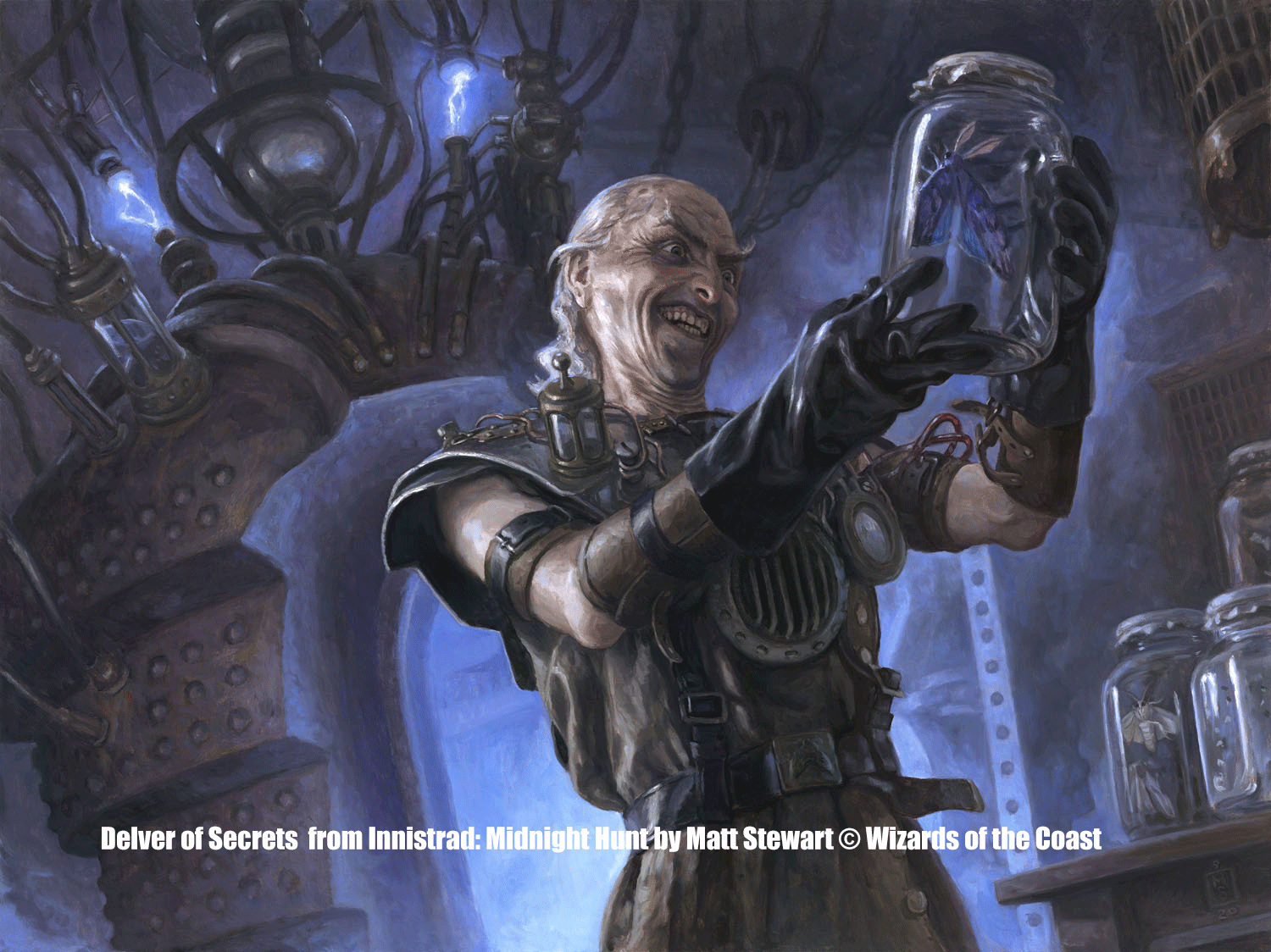
Strengths and Weaknesses of Mono-Blue Faeries
No deck is perfect, and Mono-Blue Faeries has its own set of advantages and drawbacks. Let’s summarize them clearly:
Strengths:
-
Excellent Card Advantage: Between Ninjas drawing cards and Of One Mind, this deck is almost never empty-handed. You often end games with more resources seen than the opponent, which is a big reason the deck can come back even if behind. Outdrawing slower decks gives you late-game hope, and outdrawing aggro decks means you found the answers needed.
-
Efficient Disruption: Counterspell is one of the best answers in Pauper, and here you have not only that but also Spellstutter Sprite acting as multiple extra counterspells. You can answer threats for low mana cost and sometimes even develop your board while doing so. Snap is essentially free bounce, letting you swing tempo wildly. The disruption package makes you favored against many linear or combo decks that fold to counters.
-
Evasive Threats: Nearly all your creatures have flying (except Ninjas and the one-drops like Intruder). This means you can ignore ground blockers and pressure life totals reliably. Against decks that try to clog the ground (Walls, Anglers without reach, etc.), you just sail over. This also means you’re good at picking off opposing planeswalkers (if any existed in Pauper) or dealing with battle card mechanics (not relevant in Pauper yet).
-
Low Mana Curve and Consistency: With a low curve, you rarely get clunky draws. You hit one or two lands and you’re operational. Flood is mitigated by cycling land and draw spells. Being mono-color, mana screw in terms of color doesn’t happen – no worrying “I drew the wrong half of my mana.” This makes the deck consistent, which is a strength in a format where some decks are powerful but can stumble (e.g., Affinity sometimes gets awkward draws, Tron can draw wrong pieces, etc.). You, on the other hand, basically always get to play Magic starting turn 1.
-
Resilient to Many Hate Cards: Some decks can be hosed by a single sideboard card (like graveyard decks by Relic of Progenitus or Bogles by Standard Bearer). Mono-Blue Faeries doesn’t have a single silver-bullet hate against it that completely shuts it down. Sure, Pyroblast is widely played against blue, but Pyroblast is a one-for-one answer (they still need to draw multiple to handle your many blue spells). Suffocating Fumes/Electrickery can wipe multiple creatures, but you have counterplay (literally, by countering it or playing around it). In other words, no easy mode hate exists that an opponent can slap down and you fold to (contrast with, say, Burn vs a Circle of Protection: Red – that’s almost game over if not dealt with). This means you always feel like you have a fighting chance.
-
Highly Skill-Rewarding: While this might intimidate newer players, it’s a strength in the sense that an experienced pilot can win even unfavorable matchups by leveraging skill. The deck has a high ceiling – as you improve, your win rate will climb noticeably. You can outplay opponents by tricking them into bad attacks/blocks or timing your responses well. It’s no autopilot deck; your choices matter and you can tailor your strategy on the fly (pun intended) in each game.
-
Budget and Upgrade Path: As discussed, it’s cheap to build, so it’s accessible to anyone. And any improvements you make (be it a second sideboard configuration for a known local meta, or foiling it out) are relatively low cost. The deck’s core likely won’t be banned out of nowhere either – its power is strong but fair, so it’s a relatively safe craft for the long term (Wizards did ban Cloud of Faeries long ago which was a piece of an infinite combo and too strong with free spells, but our current pieces are not on any watchlist).
Weaknesses:
-
Fragile Creatures / Low Power: Almost all creatures in the deck are 1/1s or 2/2s. This means they die to virtually any damage-based removal. Electricery for 1 damage can wipe multiple faeries at once. Ghastly Demise, Suffocating Fumes, Cannonade – there are many ways to kill small creatures. Even in combat, a stray 2/3 or a flashed Augur of Bolas can block and kill your faeries. While you do have tools to protect (Counterspells, etc.), you won’t always have them. So sometimes, a couple of well-placed removal spells from the opponent will leave you creatureless. And if you can’t stick a creature, Ninjas have nothing to work with and your damage output stalls completely. In short, the deck can be out-muscled if an opponent manages to resolve and protect larger creatures. You have ways to bounce or enchant big foes, but those are temporary or situational – if those fail, a 5/5 enemy will outclass your army.
-
No Life Gain & Vulnerability to Burn: As noted, Burn is tricky because every point of damage sticks – you have no way to gain life in the main deck (no lifelink, no healing salve, nothing). Your best defense is prevention (countering spells or chump blocking creatures). This means decks aiming to race via damage can sometimes succeed if they draw enough burn. Your counterspells might not cover everything (especially against something like Clever Lumimancer plus multiple spells in one turn pumping it). Even random cards like Spinning Darkness (deal 3 gain 3) from an opponent can swing a race because you can’t recover that way. Post-board, you still don’t gain life; you just become better at countering or blasting their threats. Essentially, your margin for error vs Burn is thin – a mis-sequenced counter or drawing one too few answers means you die with no recourse.
-
Dependent on Synergy Pieces: The deck can occasionally have “non-functional” hands if pieces don’t come together. For instance, drawing multiple Ninjas but no Faeries to enable them means you have some dead-ish cards until you find a way to get them in. Or hands with Of One Mind but only non-Humans out, making it a full 3-mana draw 2 which is slow. Or Spellstutter Sprite with no friends to counter a >1 mana spell. These situations are usually mitigated by how the deck is built (lots of one-drops to enable Ninjas and Spellstutters), but they can occur. In topdeck mode, drawing the wrong half of your deck at the wrong time is rough – e.g., opponent has a 4/4 in play and you topdeck two Faerie Miscreants, which won’t save you. Or opponent is hellbent (no cards in hand) and you topdeck a Counterspell – which does nothing to the board, whereas a creature would pressure. You have to accept that some draws will line up poorly. (The flip side is when draws line up well, you feel unstoppable.)
-
Struggles Against Wide Boards: If an opponent swarms the board with lots of creatures (especially flyers or ones you can’t easily block), you can be in trouble. You don’t have a true sweeper in blue (no Anger of the Gods type card). Echoing Truth can bounce tokens of one name but if there are multiple different threats, it’s harder. For example, Elves – they might flood 5+ creatures out. You might counter one or two, but eventually quantity can overwhelm. Similarly, if an opponent continually produces tokens (e.g., Battle Screech making two 1/1 birds each flashback, or Murasa Marauder making insect tokens each turn), you can’t kill tokens permanently, only bounce temporarily. One could run something like Deep Freeze or Kasmina’s Transmutation for single targets, but multiple bodies require multiple answers, and you can get run down.
-
Weak to Specific Sideboard Cards: While we said no single card completely shuts you down, there are some that hurt a lot:
-
Suffocating Fumes / Electrickery / Fiery Cannonade: We’ve mentioned these – sweepers that can take out all X/1s. If resolved at the right time, they can blow you out, and you might not always have a counter or Trickery can be cast for overload which Spellstutter can’t hit unless you have 3 faeries out (since overload doesn’t change CMC). You have to play cautiously around them, which can slow your development.
-
Red Blasts (Pyroblast/REB): These effectively cut through your defenses on important turns. Your opponent can win a counter-war by sticking a Pyroblast on your key spell. Or they use it to kill a Ninja mid-combat, denying you a card and killing your 2/2 – that swing is huge. You can’t do anything about the existence of Pyroblast; you just have to bait them or counter back. These are efficient trades for them (1 mana answer to 2 mana Counterspell or to a creature you spent effort to ninjutsu in). You’ll often find opponents draw two blasts in sideboarded games and you have to grind through a “8 card hand” effectively. It’s doable, but definitely a weakness to acknowledge – being blue comes with that target on your head.
-
Walls like Standard Bearer: A card like Standard Bearer (all spells must target it) can hose decks with targeted spells – luckily, we don’t target opponents’ stuff often except with Snap or removal auras. Bearer doesn’t affect counterspells or our plan much (we can just ignore it). In fact, we have it easy compared to, say, Bogles (which dies to Edict effects that we don’t care about much).
-
Ulamog’s Crusher / Big Bombs: If a really big threat resolves that we cannot answer with a single Snap or counter, it’s rough. For example, Ulamog’s Crusher (8/8 Annihilator) – if somehow we let that resolve (perhaps through a reanimation or cascade), we basically can’t kill it. We can chump with tokens for a turn or two, or bounce it once, but it’ll come back. This is where sideboard like Subjugation helps, but game 1 an 8/8 is nearly impossible to beat. Such bombs are rare though in current meta outside of Tron’s Rolling Thunder (which hits life or creatures).
-
-
Requires Careful Play: As a weakness for some – the deck is not easy to pilot at 100% efficiency. Mistakes like tapping out at the wrong time or ordering triggers incorrectly can cost you. It’s not a “weakness” of the deck per se, but compared to a straightforward aggro deck where you just turn creatures sideways, here you might lose games if you choose to Ninja when you should have held up a counter, or vice versa. It’s a deck that can “lose to itself” if you mis-sequence. That said, this is also a strength as mentioned, because mastery mitigates
… that said, this is also a strength (as mentioned) because mastery mitigates it – but for a new pilot, it can feel like a weakness until you get comfortable.
In summary, Mono-Blue Faeries’ strengths lie in its efficiency, card advantage, and ability to dictate the pace of the game. Its weaknesses are its fragility and occasional inability to handle certain situations (like being behind on board against many creatures or facing direct damage). Knowing these will help you mulligan and play to maximize the strengths and minimize exposure to the weaknesses.
Closing Thoughts
Mono-Blue Faeries is a Pauper deck that truly embodies the spirit of “little things doing big work.” It’s about finding power in synergy and timing rather than raw stats. You’ll win plenty of games with an army of 1/1 Faeries and a well-placed counterspell, leaving opponents scratching their heads as to how their big bombs never got to stick. Few things are as satisfying in Magic as the look on an opponent’s face when you Spellstutter Sprite their key removal or bounce their fatty for the third time – it’s a delicate dance of fae trickery, and when you execute it well, it’s poetry on the stack.
This deck tech has covered the core strategy, important card choices, mana base tips, example hands, matchups, sideboarding, and variant options. By now, you should have a solid understanding of how Mono-Blue Faeries functions and how it fits into the Pauper meta. In the current environment – with Affinity, Burn, Terror, and other top decks around – Mono-Blue Faeries holds a respectable position and often demands respect from opponent. It’s not a deck that opponents can ignore; if they do, they’ll quickly find the game slipping away as you capitalize on every small mistake or tempo loss they suffer.
A few parting pieces of advice:
-
Practice, Practice, Practice: This deck rewards knowing both your deck and the opponent’s. The more you play, the better you’ll get at anticipating what to counter or when to press the advantage. Each matchup can teach you something new.
-
Patience and Poise: A hallmark of Faeries players is patience. You don’t need to counter everything, just the things that matter. Sometimes letting a spell resolve (and maybe bouncing it later) is better if it means you can develop your board. Other times, you must strike with counters immediately. Keep cool and think a turn ahead.
-
Mind the Clock (in events): On Magic Online, Mono-Blue Faeries can take a bit to close a game since it wins through incremental damage. Be mindful of your chess clock – play efficiently once you know your lines. In paper, be aware of round timers; don’t get too carried away with slow-play. You want to actually finish matches (no one likes a draw).
-
Have Fun with the Bluffing Game: One subtle aspect is bluffing. With open mana, you represent a lot. Use that to your advantage. Sometimes an opponent will make suboptimal plays because they fear a counter that you don’t even have in hand. It’s an art – enjoy it! As MTGGoldfish’s style often notes, there’s a bit of playful banter in these games: you’ll find yourself saying “gotcha!” often with this deck (probably best said in your head, not aloud, to maintain sportsmanship).
Mono-Blue Faeries has been a pillar of Pauper for a long time and continues to evolve with new sets and new tech. It offers a balanced blend of competitiveness and fun – you always feel like you’re doing something each turn, and you’re engaged in every phase of the game. It’s a deck that can make you a better player across Magic formats, teaching skills like tempo evaluation and stack management.
So if you’re looking for a Pauper deck that is affordable, powerful, interactive, and rewarding, shuffle up some Islands and join the Faerie mischief. It might take a few matches to get used to piloting the archetype, but once you do, you’ll understand why Mono-Blue Faeries is lovingly called “Faeries” – tricky, fleeting, and downright magical.
Good luck, and may your Spellstutter Sprites always have the perfect number of Faerie friends! Happy flying!

